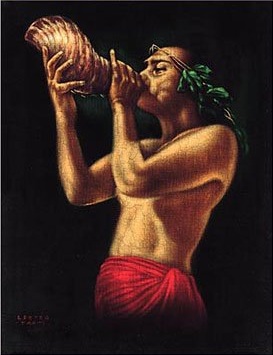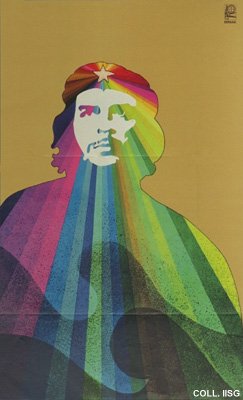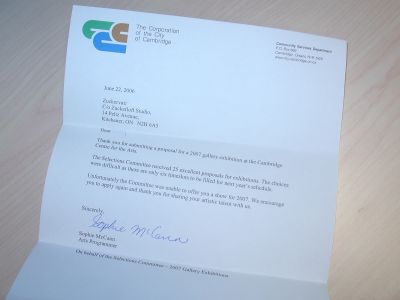Cornelius Krieghoff’s Run off the Road in a Blizzard commanded the spotlight last night at the final major auction of the fall season, the Joyner Waddington’s sale of Canadian art in Toronto.
The painting, a 12-inch-by-18-inch oil on canvas showing an upset sleigh and floundering habitants in the midst of a Lower Canada winter, went into the bidding with a presale estimate of between $100,000 and $150,000, but ended up selling for $307,000 (including a 15-per-cent premium).
Two other paintings by Krieghoff also sold for more than $150,000 last evening.
Another top seller was a small panel painted in oils by J.E.H. MacDonald, titled In Algoma, which commanded $252,000 (including 15-per-cent premium), far above its presale estimate of between $25,000 and $30,000. Its sale prompted applause.
globeandmail.com: Canadian art proves it has a hot market
Call for artists: ASAP’s Winter Exhibition
Call for artists: ASAP’s Winter Exhibition
Available Space Art Project places artworks in downtown Kitchener storefronts, restaurants, cafes and vacant spaces. Our goal is to support regional visual artists of any media – including sculpture, painting, installation, textiles and printmaking. We would like to offer you an opportunity to show your work in one of our Available Spaces. Please pass on this call to any interested artist in Waterloo region.
Please drop off your work for both exhibitions at the Kitchener Downtown Business Association (53 Queen Street South) at one of the following times:
Monday Nov. 27th – 12:00 – 2:00pm
Wednesday Nov. 29th – 11:30-1:30pm
ASAP takes 20% commission on all sales to cover its expenses.
All artworks should be ready to hang. They have an insurance waiver for artists to sign. All works will be stored at ASAP’s office at Kitchener Downtown Business Association.
Please RSVP if you are interested in participating.
Contact: ASAP Installation Coordinator
519-584-1709
availablespaceartproject[at]yahoo.ca
Paradise painted
Velvet paintings have a bad name, and most of them deserve it. Crude, mass-produced pictures of Elvis, JFK, and dogs playing pool are the norm. But velvet is a difficult medium to work with, and Edgar William Leeteg had a facility with it that approached genius. Inexpertly applied, paint will cake and clog the velvet nap. The black velvet dye can bleed even the brightest colors to muddy browns and dull, dirty grays. Leeteg knew black velvet like an astronomer knows the night sky. With an artist’s instinct, he painted each individual strand, adding thin layers of color one at a time. He used a limited palette—only seven colors and white—but created results so rich that one observer said that he “painted with light.”
Known to many as the American Gauguin, Leeteg (1904-1953) led a Jack Kerouac life, ghost-written by William Burroughs. An adventurer by nature, he fled civilization to lead a wild life in Tahiti. Even in a culture not known for its puritanism, he stood out, drinking, fighting, and wenching more than any six men. He once described himself as a “fornicating, gin-soaked dopehead.”

But his carousing was a calculated pose to promote his art, and the staggering quantity of paintings he left behind (an average of three a month for 20 years) suggests that he was as much a workaholic as an alcoholic. A butcher’s boy and the grandson of a graveyard sculptor in East Saint Louis, Leeteg picked cotton, herded cattle, and did factory work until he landed a job at 22 as a sign painter in Sacramento. When the Depression hit and the work ran out, Leeteg took a small inheritance and set sail for Tahiti with brushes stolen from the sign company and six mayonnaise jars full of paint. His first commissions—posters and lobby ads for theaters—barely put food on the table. He lived hand to mouth, restlessly experimenting with different painting surfaces, including wood and cloth. Finally, he hit on velvet—and struck gold. Leeteg circulated the story that his first velvet “canvas” came from a mortuary, suggesting a discovery born from desperation. But he knew velvet’s potential; in museum visits, he had seen Renaissance and Victorian velvet paintings. Velvet became the perfect medium through which to express Leeteg’s love of Tahiti’s sensual beauties—the natural light, the landscape, and especially the native women.
Paradise painted (Seattle Weekly)
Michael Snow still surprises
At the age of 76, Michael Snow, Toronto’s most celebrated artist, continues to astonish us with his inventions.
He recently unveiled his newest public art piece, a changing projection located on the exterior of the Pantages Hotel on Victoria St.
Q Your new work is unlike any other public art in Toronto. What are some of the scenes passers-by will see in The Windows Suite?
A One involves the top four “windows” (really flat plasma screens), which are widely separated.
You see a room like one in this hotel, with a bed. Two policemen appear, apparently looking for something. They wave a flashlight around, forward and horizontally, and the light flashes through to the other rooms (seen through the windows). They then appear in the other rooms, moving the flashlight.
We see one segment called “Red Tape” in which a man goes from window to window and sticks red tape across the glass diagonally to make an X. Then the whole thing is played backwards so that the tape comes off.
TheStar.com – Michael Snow still surprises
Cuban Posters
With a small rebel army, Fidel Castro seizes power in Cuba by the end of 1958. Although he tries to take an independent line, he must deal with significant Russian influence on the new regime. The socialist realist posters from the early years attest to this influence.
Around 1965, in a period of strained relations with the Soviet Union, the Cubans decide to develop styles more suitable to their own circumstances. A period of artistic freedom follows. The arts flourish, and there are lively international contacts. Talented Cuban artists start designing colourful, inventive posters of traditional subjects such as commemorations of the revolution or calls for more production. The Cuban leaders are portayed as cheerful and unconventional. Especially striking are the splendid posters issued by cultural organizations such as the ICAIC, the Cuban film institute. OSPAAAL, the organization for solidarity with the people of Africa, Asia, and Latin America, distributes its posters worldwide. Che Guevara’s portrait is transformed into an international symbol for romantic rebellion.

Heroic, idealized portraits like this one are made only from Che Guevara, and only after his death. Fidel Castro and the other leaders are deliberately portrayed as ordinary human beings.
The Chairman Smiles – Cuban Posters
ASAP: Call for artists: ASAP’s Fall 2006 Exhibition
Call for artists: ASAP’s Fall 2006 Exhibition
Available Space Art Project places artworks in downtown Kitchener storefronts, restaurants, cafes and vacant spaces. Our goal is to support regional visual artists of any media – including sculpture, painting, installation, textiles and printmaking. We would like to offer you an opportunity to show your work in one of our Available Spaces. Please pass on this call to any interested artist in Waterloo region.
Please drop off your work for both exhibitions at:
Kitchener Downtown Business Association
53 Queen Street South at one of the following times:
Wednesday Sept. 6thth – 12:00 – 2:00pm
Thursday Sept. 7th – 2:30 – 4:30pm
ASAP takes 20% commission on all sales to cover its expenses.
All artworks should be ready to hang. We have an insurance waiver for artists to sign. All works will be stored at ASAP’s office at Kitchener Downtown Business Association.
Please RSVP by September 1st, 2006 if you are interested in participating.
Contact: Soheila Esfahani
ASAP Installation Coordinator
519-584-1709
availablespaceartproject[at]yahoo.ca
ASAP: Call for artists: Art on Fire
ASAP: Gallery without walls in downtown Kitchener
Call for artists: Art on Fire
Available Space Art Project is currently inviting regional artists to submit work in any media to participate in ASAP’s art exhibition as part of “Art on Fire” arts fest in association with K-W doors’ Open Ontario on Saturday September 16th and Sunday Sept 17th, 2006 at the Station 2 Studios.
What is Doors Open Ontario?
Throughout Ontario, many significant and historical properties are open to the public on designated dates every year that would not normally be open. Here in K-W, on Saturday, Sept 16, 2006 there will be over 35 open for viewing.
For the first time, the new Station 2 Studios located in the old Fire Station at Duke St. W and Breithaupt Sts. in Kitchener not only joins the event but is also hosting an arts fest called “Art on Fire!” on the same day to make our visitors’ trip more rich and enjoyable.
When: Saturday, Sept 16
Sunday Sept 17, 2006.
Time: 10am to 5pm, Saturday, Sept. 16, 2006
12 noon to 5pm on Sunday, Sept 17, 2006.
Location: Station 2 Studios
318 Duke W.
Kitchener, ON
First Rejection Letter
Received my first rejection letter today, along with my slides and CD. No big surprise there, really. I expect more than a few of these in my life — I once tried to publish short stories, and have many a rejection letter from that little escapade.

Still, at least they returned my slides. I invested a lot of time to get those made, and I was a little worried they weren’t going to come back. CDs, on the other hand, are a dime a dozen (or thereabouts), so I really would rather submit stuff on CD.
I suppose the quality of paintings can be faked easily in digital media. You can retouch digital images to your heart’s content, but slides are harder to do. All the same, my slides were crappy, so if you compare the slides against the digital photos, my work lies somewhere in-between the retouched digital images and the poor-quality slides.
New Mexico artist crushed by own sculpture
Luis Jimenez, a Latin American sculptor whose work adorns public places across the U.S., has died after being crushed by his own sculpture.
Part of the sculpture fell and pinned the 65-year-old artist against a steel support while it was being moved with a hoist at Jimenez’s studio in Hondo, New Mexico, according to the Lincoln County Sheriff’s office.
His 1969 work Man on Fire was a sculpture of a man in flames that drew its inspiration both from Buddhist monks in South Vietnam who immolated themselves and the Mexican story of Cuahtemoc, set afire by Spanish conquerors.
That work was displayed at the Smithsonian Institute in Washington. His work has also been seen at the Museum of Modern Art in New York and is on display in public sites at the University of New Mexico and Albuquerque’s Martineztown.
His 1996 sculpture Fiesta Dancers, in front of the El Paso’s Fine Arts Centre, is a colourful fibreglass work that depicts fiesta dancers. Several Jimenez sculptures are civic landmarks in his hometown.
CBC Arts: New Mexico artist crushed by own sculpture
New studio doors are here
They just came in, and are now leaning against the side of the house. They’re about 90″ wide, where the studio opening is about 101″, so I’ll need to build some new framing to accomodate them. It’s a 3-section door unit, with one fixed door, one pinned door, and one regular door. They’ve all got slide-up screen openings, so I can get air movement within the studio (which it really needs).
Over the next week or so, I’ll be installing them and removing the previous fold-up garage door. I’m not sure what to do with the old door, but I think the RE-Store or Habitat for Humanity can use it.

